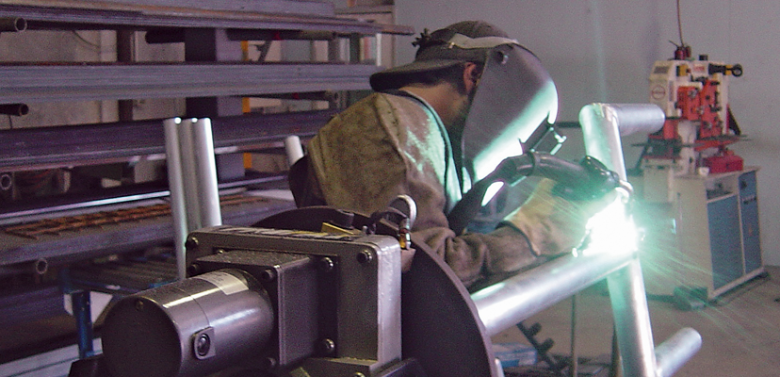Articles

Hot Dip Galvanising is an advanced fabrication product that protects iron and steel from rust by coating a thick metallic zinc membrane over the steel surface sealing it from the corrosive action of its environment. This high quality zinc coating is welded to the steel surface by creating an alloying reaction between zinc and the metal surface to form a hardened, durable and impervious coating which protects the steel through a remarkable electrochemical system.
Electrochemical protection also known as sacrificial protection is where there is damage or minor discontinuity in the sealing coat of zinc, the zinc sacrifices itself to protect the steel to which it is alloyed. It will go on doing almost the last atom of zinc and makes sure that corrosion does not attack to steel that you fabricate or use. Electrochemical protection is different to organic paint coatings in that it doesn’t require frequent renewal. Galvanised coating can’t come off because it’s alloyed to the surface of the metal, coating every surface of the product, inside and out. Hot Dip Galvanising is a specialised process due to the knowledge of metallurgy required to effectively apply the process. With most steel products the surface is often contaminated with rust and oil, and alloying takes place only if the surface of the steel is clean enough to be wetted by liquid zinc. Galvanising cleans the steel by degreasing and pickling to obtain a chemically clean surface.
For the reaction between zinc and the steel to take place, the steel must be place in liquid zinc at a temperature between 445-460 degrees, at this temperature, iron and zinc react quickly and therefore the process only takes a few minutes. Fabrication however is taken out of the zinc when the reaction is complete. Although the zinc coating has already formed, its internal structure continues to change until the steel returns to normal temperature. There are no short cuts to Hot Dip Galvanising, zinc wont alloy with the steel if surface contaminants are incompletely removed. The alloying reaction can’t take immediate action and reprocess the work following a simple visual inspection. Once Hot Dipped Galvanising is complete the surface of the metal becomes abrasion resistant and obtains an aesthetically pleasing coating that will last for years and little or absolutely no maintenance is required. Galvanising does have a finite life and its effectiveness as a barrier depends directly on the thickness of the coating and the environment.
Despite the initial increase in labour costs associated with Hot Dipped Galvanising compared to alternative steel coatings, galvanising is almost invariably cheapest in the long term. The standard 610gm² galvanised coating has a typical life without maintenance of more than 50 years in rural environments and 20 to 25 years in urban and coastal conditions. Because galvanised coating is a unique metallurgical structure which gives outstanding resistance to mechanical damage in transport, erection and service. Maintenance is deferred for very long periods compared to other coatings for steel. Maintenance can be extremely expensive when it entails difficult access, or when structures are located in remote areas. Galvanised coatings provides sacrificially or cathode protection to small areas of steel exposed through damaged to the coating. Unlike organic coatings no touch up is needed.
Every part of the galvanised product is completely protected, even recesses, sharp corners and inaccessible areas. No other coating applied to a fabricated product can provide the same protection. Galvanised coating thickness is controlled automatically by steel thickness and a standard, minimum coating mass results. Galvanising is faster than painting, and elimination of site painting, can save substantial time in site erection or assembly.
